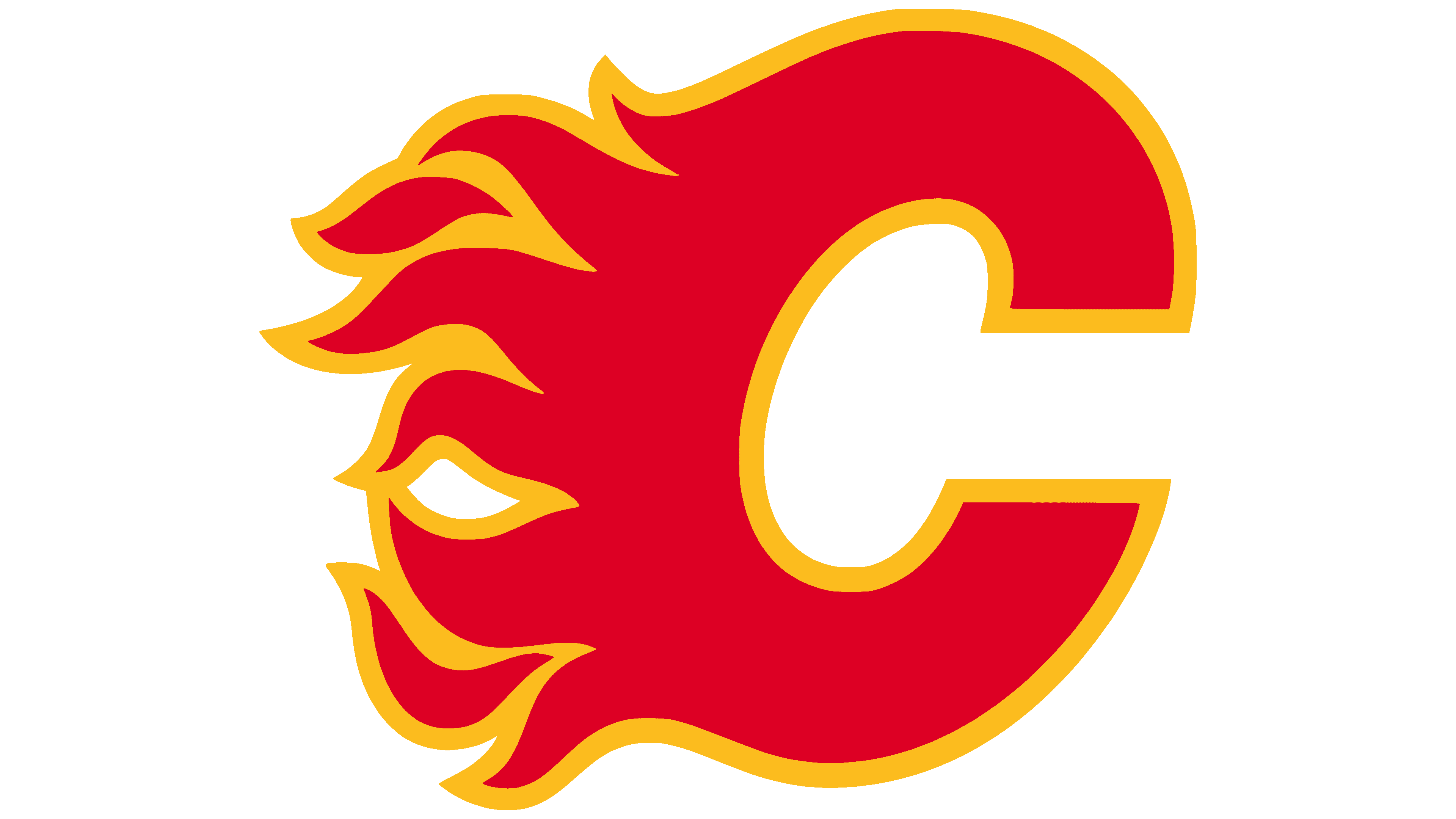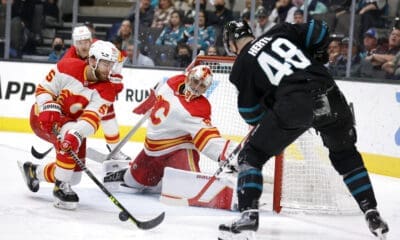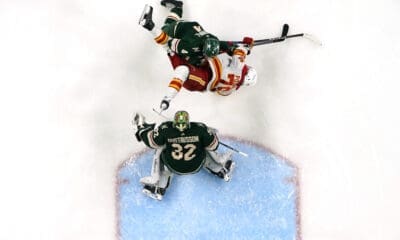Calgary Flames
Liabilities, Part One: The ‘Flame’ Breakout

There are a number of things I've been picking on the Flames about in recent years. Of this list of pet peeves, none have been rectified, although some have been improved.
Led by Mark Giordano, we see an improvement in blocked shots.
On the PK, taking away the points, or at least challenging those playing on the point, has improved slightly as well. Albeit not nearly as much as I'd like.
But, the single-most issue I have with the Calgary Flames is what I’ve dubbed the ‘Flame’ breakout.
Over the course of my next couple posts, I'll cover some of the problems I have with the Flames systematically and we can see how it develops throughout the season.
I'll start by explaining what I mean by the 'Flame' breakout. It's the refusal to headman the puck to gain offensive momentum while exiting the defensive zone. It's the decision to reverse the puck at even the slightest feeling of pressure along the end boards. Similarly, it's the decision to retreat back to the defensive zone instead of making a pass into the neutral zone, making a fore-check that much more effective. It's sitting behind the net, allowing the opposing team to set up their trap and making us much more vulnerable given the track record of our breakout. It's the trademark of the Calgary Flames defense corps.
Although it started with Darryl Sutter after his hiring as head coach, I can hardly place all the blame on him. Given that, at the time, the Flames D was hardly capable of much else. In fact, they tended to excel playing keep away in their own zone, allowing bruisers like Robyn Regehr to hold their men against the boards while the grinders scooped the puck away. It was pre-lockout NHL and the Flames group of defenseman were the elite in terms of taking away space in the defensive zone.
That was a long time ago, and the game has changed mightily. However, even with a multitude of coaching changes, the 'Flame' breakout seems to remain a staple of the defenseman's handbook in Cowtown.
It looked as if we were turning the corner with Dion Phaneuf. He’d take the puck behind the net and dare anyone to chase him before darting out and beginning a rush. It was a thing of beauty… until he had to do something with the puck. First passes weren’t exactly his forte, but hey, we’re making progress.
Then, Jay Bouwmeester entered the fold. Oh, the tales we’d heard of his puck-moving ability. “Gather ’round the campfire young’ns and let me tell you of a time, long long ago, when I saw with my very own eyes, the one they call J-Bo move the puck (forwards!) in his first couple games at the ‘dome.” It didn’t last, and he was sucked into the unforgiving grip of the ‘Flame’ breakout because, regardless of how good you are at moving the puck, if your forwards aren’t in a position to be able to accept a pass and move forward, it ain’t happenin’.
So ingrained are the forwards with our superbly inefficient breakout, that they tend to hang out along the boards, for the effectiveness of the glass-and-out technique so favored by the Flames doesn't lend itself well to being open in the neutral zone.
And now, as another off-season has come and gone, I find myself face to face with the reality that the 'Flame' breakout is likely here for at least another season as the ever-changing defensive personnel isn't equipped to make that sort of change on a whim. Add to that, the Troy Ward-led prospects looked like they had a pretty good grasp on the 'Flame' breakout, and, judging by its longevity and roots within the organization, I might be in the minority in feeling this is a major problem.
See for yourself – and we'll track this as the season goes. Because, if you're stuck with hearing from me throughout the course of the season, it's a given that the 'Flame' breakout will be brought up on many more occasions.
by Scott








